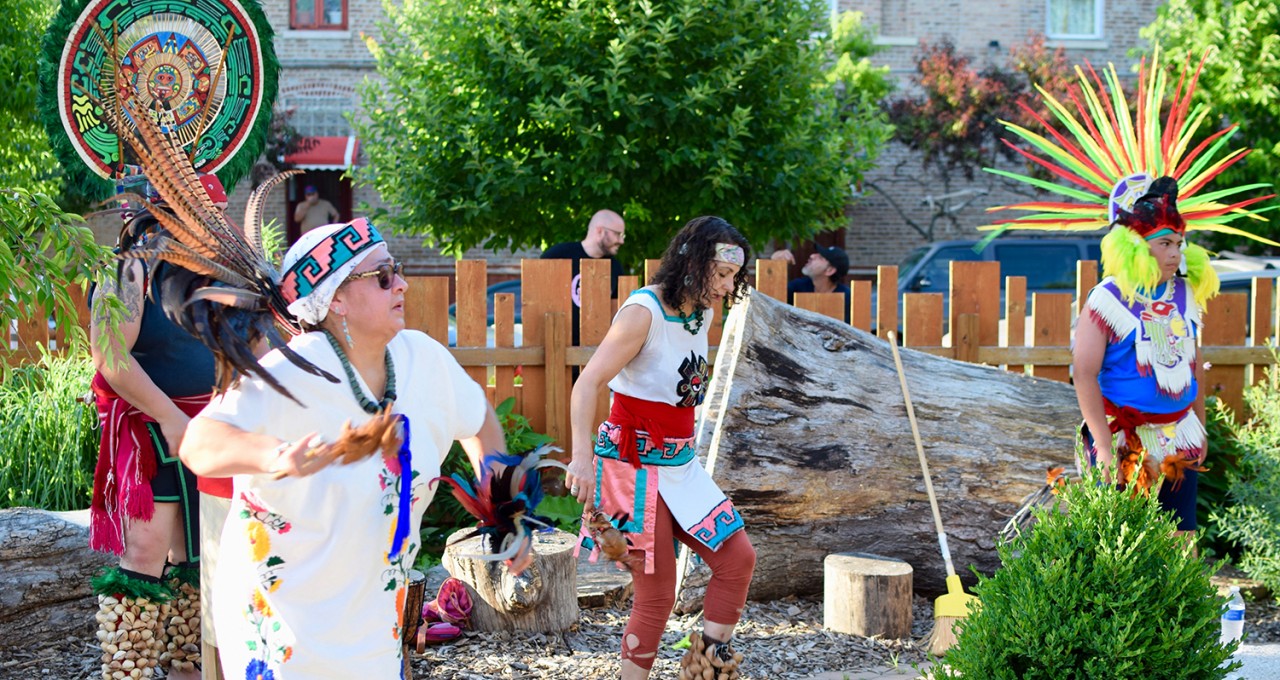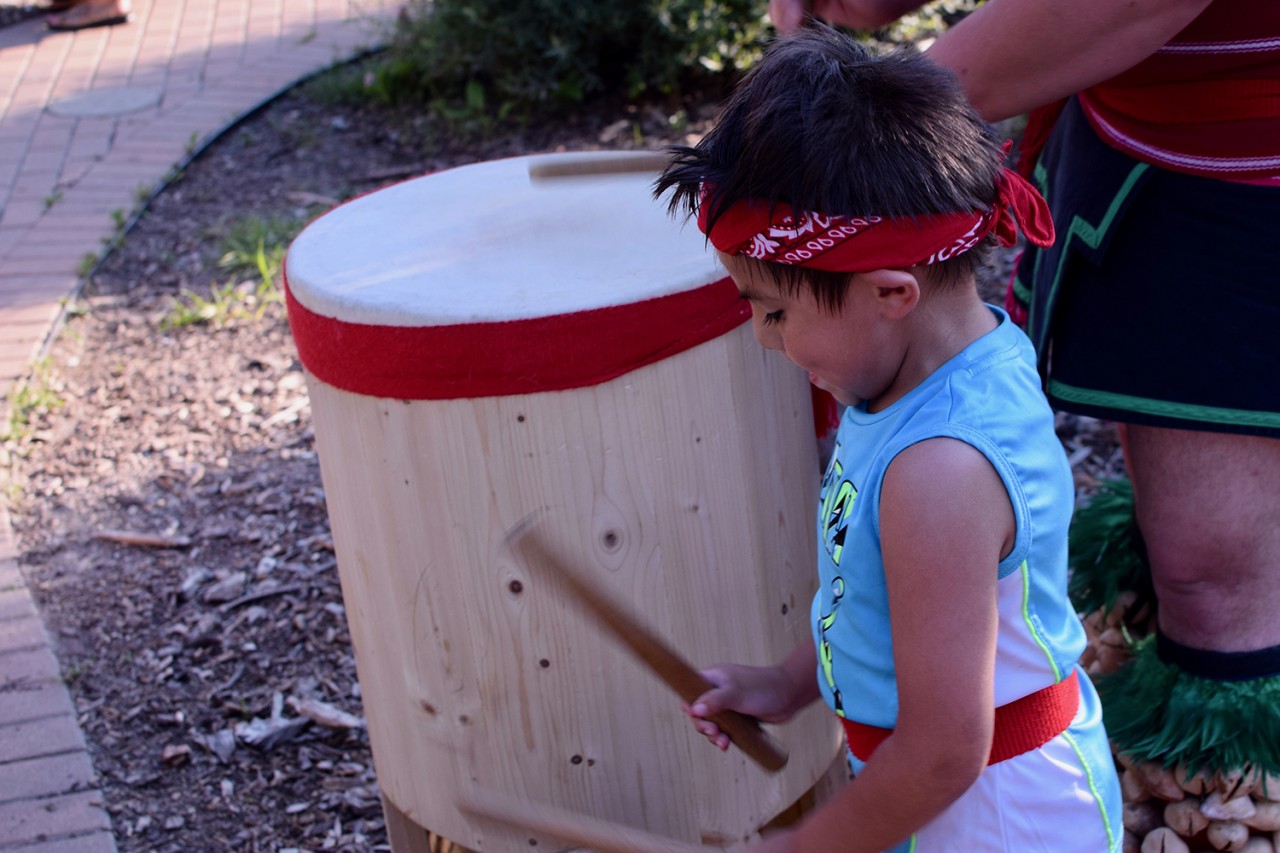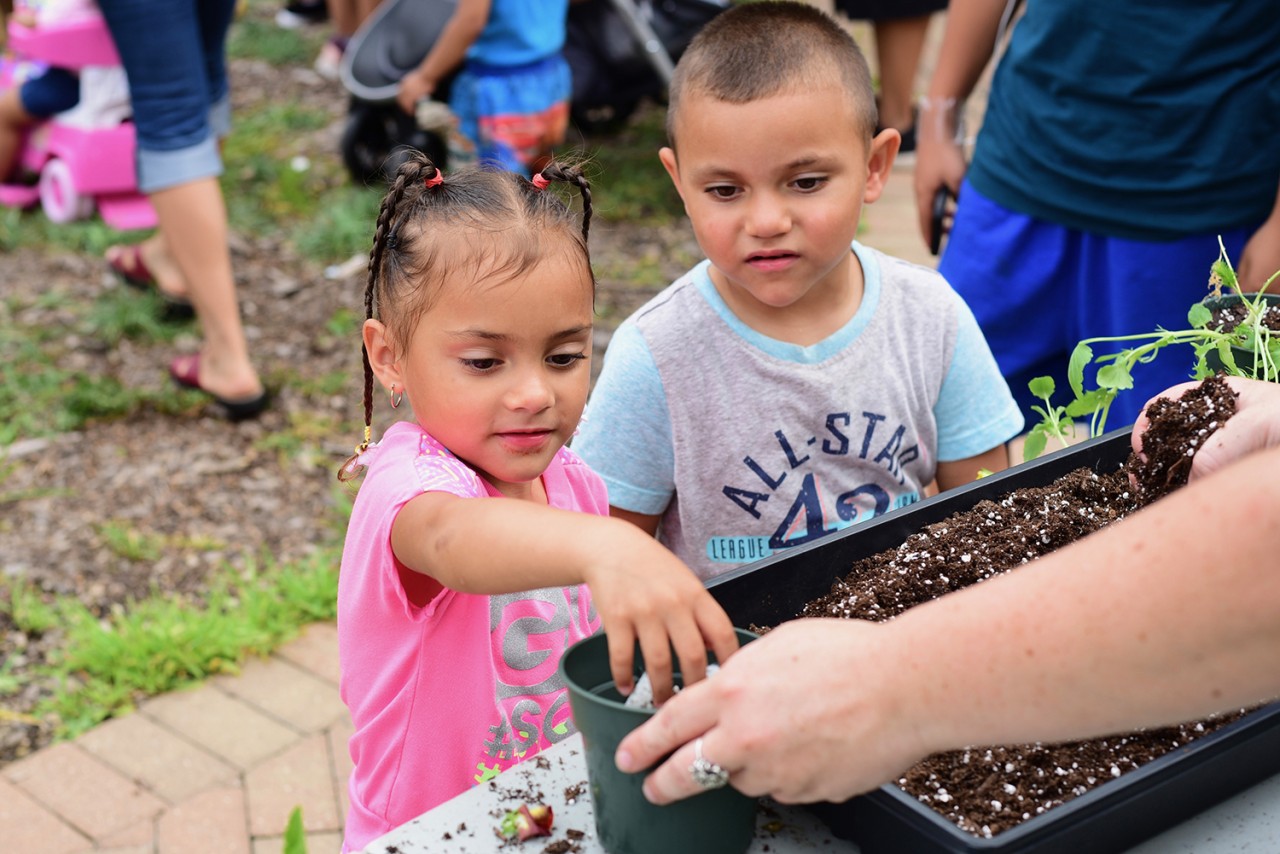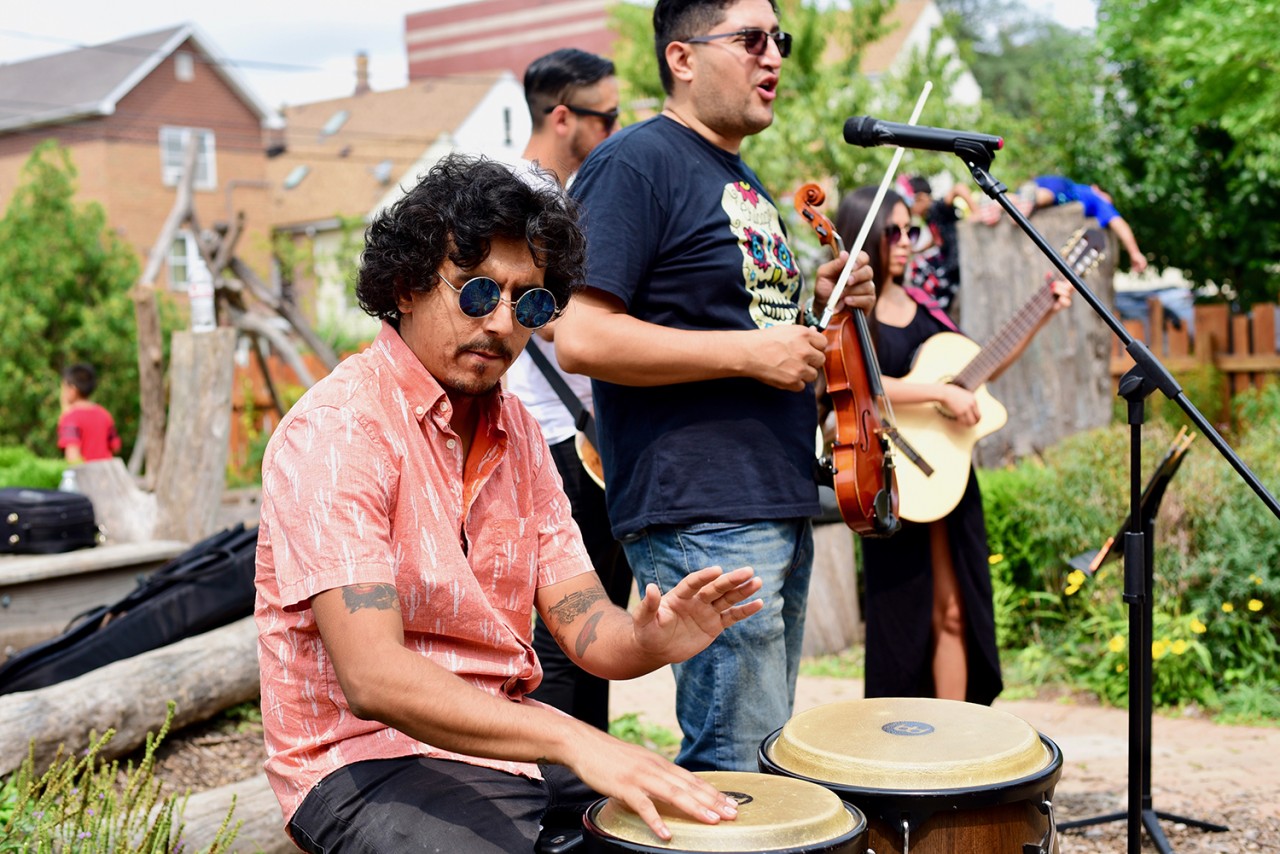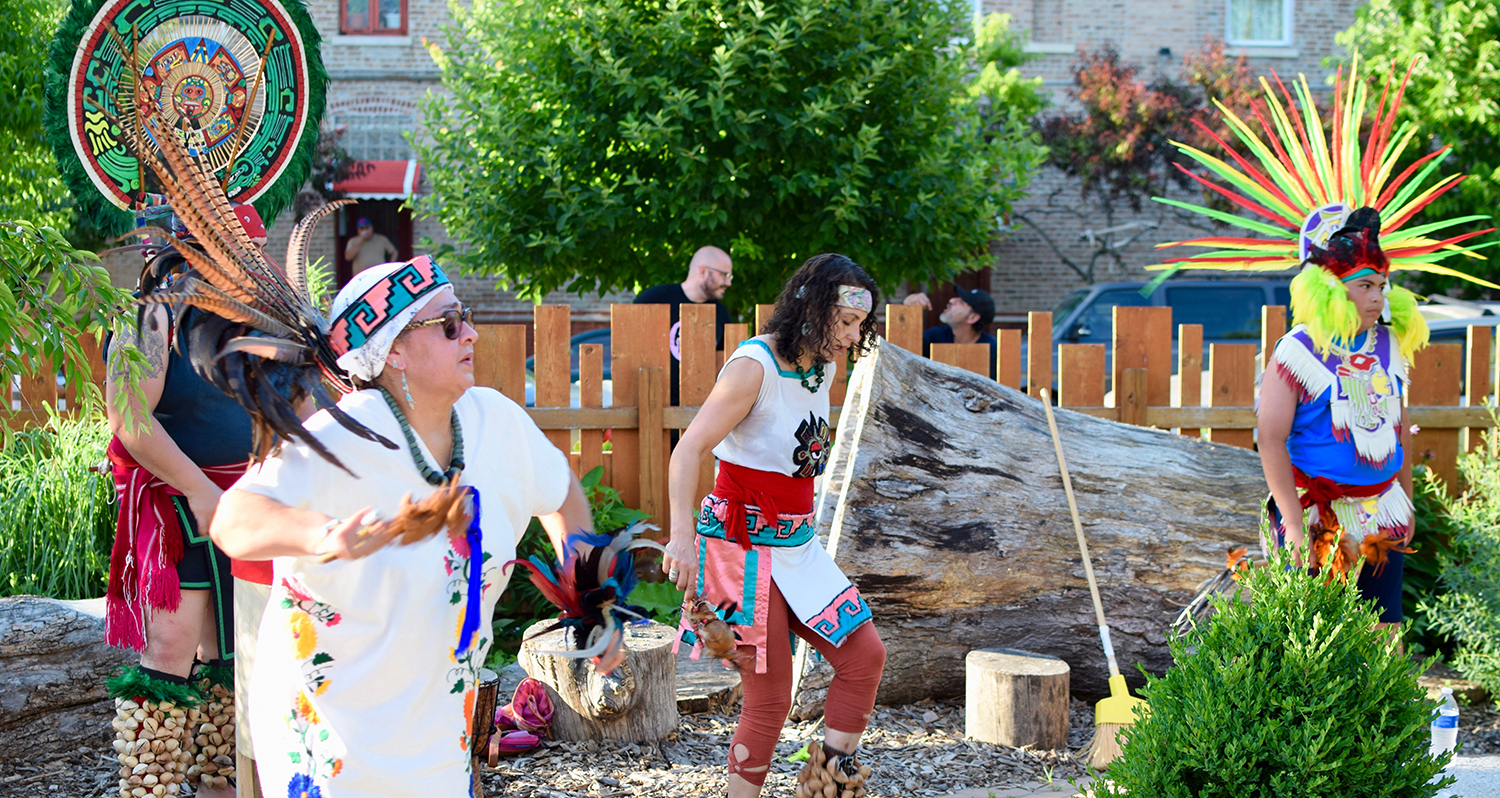
Little Garden, Big Vision
Second-year Safe & Peaceful grantee Jardincito Nature Play Community Garden uses nature as a conduit to showcase and serve the spirit of Little Village
Located at 23rd and Whipple, Jardincito, or “little garden”, is one of the very few greenspaces open to residents on Chicago’s Southwest Side.
“A lot of the gardens that we’re used to seeing around Chicago are usually places where food grows,” says Sara Cortes, Jardincito community programs coordinator. “Jardincito was established as more of a recreation and play space for the neighborhood,” she adds, pinpointing nature play, environmental science, art and gardening as the main drivers of the organization’s research, outreach and project management.
Established in 2015 through coordinated efforts by community groups and NeighborSpace, Jardincito Nature Play Garden was created with particularly children in mind. In addition to its plants and flowers, the garden has a wooden stage at its center, surrounded by boulders for climbing and logs for leaping. “It’s like an obstacle course for the kids, with interactive, natural elements,” Cortes says.
Since receiving its first grant from the Safe and Peaceful Communities Fund in 2017, Jardincito’s Advisory Council has maintained its focus on developing programs that instill a sense of pride in the Little Village neighborhood and continue to strengthen residents’ bonds with nature. Last summer the community garden held a season-long nature play series for children (guided by a young naturalist and educator); after eliciting community feedback, the council expanded and established this summer’s offerings around three themes: summer solstice, back to school and the arts as a conduit for healing.
¡Saludando al Sol! brought neighbors of all ages together to welcome the new season while they enjoyed food, gardening activities, and special performances by Mexica dance group Maizal Macuil-Xochitl.
“One thing that I think ties into neighborhoods feeling safe is having these public programs that are a reflection of the community and the culture that exists within the community. Having the Aztec dance group there helps with continuing to observe our cultural traditions and also makes people feel like the public programming really reflects our values, our culture, and what we want to see present in the neighborhood,” adds Cortes.
The Back to School celebration built upon what Jardincito debuted last year, providing free school supplies for all the attending youth and also holding educational workshops where kids learned about birds and their habitats, caterpillars and butterfly migration, and how to pot plants. While the kids participated in various nature-related activities, the adults enjoyed snacks and a performance by A Flor de Piel, a music group that has ties to the Latino neighborhood and plays various genres of music from Latin America.
The highlight of Jardincito’s 2018 programming was “Healing Through the Arts,” where children were invited to participate in various artistic activities, such as music, theater, and dance that incorporated the garden’s nature elements. The inspiration for the summer-long series was giving the young participants outlets and strategies to cope, and manage stress and anxiety.
“It’s a really important asset to the community because there’s a lot of gang violence, poverty, and a lot of residents are from low-income, immigrant families,” explains Isaura Flores, who created and implemented the 10-week Healing Through the Arts curriculum which included creating collages and spirit guide dolls, writing songs, and curating garden bundles. Flores emphasizes that having programming in the garden allowed for both the accessibility and flexibility that is very important to the families involved, “in case something happens and the parents want them [the children] back home,” she says.
“The garden is such a healing place so the pure benefits of just being around greenspace and pairing that with the arts, bringing those two things together seems like such a perfect experience for the kids in our neighborhood,” Cortes concludes. “A lot of kids aren’t used to playing in spaces like this because they spend so much time indoors —kids come to the park, and at first they’re a little lost on how to really use the garden and engage with the elements there, but we are guiding the kids and using the available features to help them become imaginative again.”
“Nature has such a big impact on social, emotional, intellectual development, and if we can help highlight that, and have Jardincito be a place where the community can come and experience those benefits, that’s our ultimate vision,” Cortes explains.
This is a story about the Community Safety and Peace strategy of the Partnership for Safe and Peaceful Communities.


